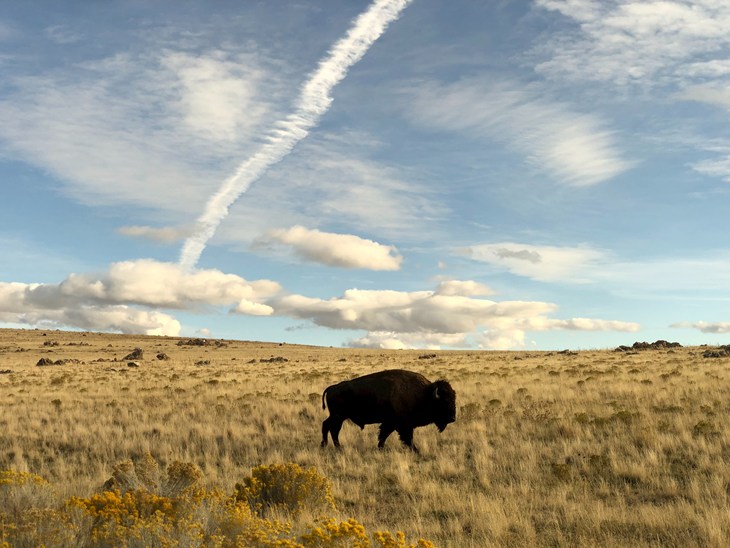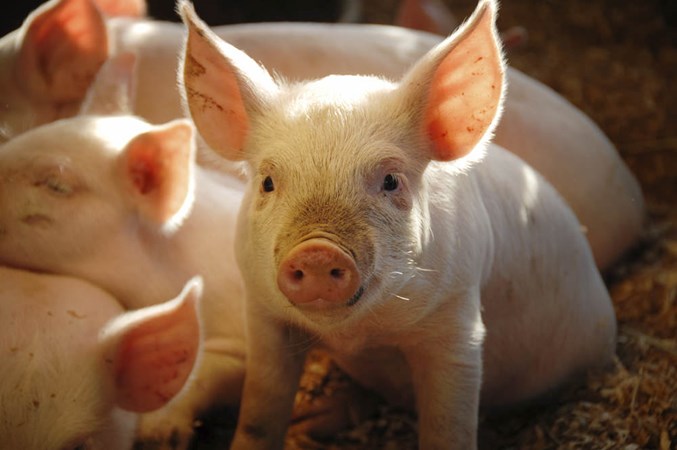4/22/2022
By Allie Molinaro
For years, overconsumption and fossil fuels have dominated the Earth Day narrative. Politicians have capitalized on the allure of clean technology with scintillating visions of whitewashed wind turbines and gleaming solar panels adorning urban and rural landscapes alike. While many of us have dutifully sipped from our reusable water bottles and paper straws as we wait for engineers and tech gurus to build out clean energy infrastructure, an even greater environmental threat lies right under our noses—more specifically, on our plates. Even if we immediately stopped using fossil fuels, our current rate of meat consumption makes meeting the 1.5°C target of the Paris Agreement impossible. Reducing meat, egg, and dairy consumption is one of the easiest and strongest levers we can use to combat climate change, pollution, and animal abuse. And we can act right now.
Over the last several decades, the demand for cheap meat has moved animals off pastures and into factories, where meat products are mass-produced like iPhones. However, unlike our phones, these are living, breathing beings with not only a conscience but needs that directly compete with our own. Whereas the inputs for our phones consist of materials like aluminum, cobalt, and copper, the inputs for animal-sourced foods include crops, land, and water, all of which could have been directly used for humans. This discrepancy has long been known as a main cause of food insecurity. Livestock outnumber humans worldwide by ten to one, most of whom are kept on factory farms (also known as concentrated animal feeding operations, or CAFOs). These facilities can have as many as 5,000 pigs, 15,000 cows, or 125,000 chickens packed into a single operation.
Also unlike phones, factory farms churn out manure, soiled litter, wastewater, and the bodies of animals who died before reaching the slaughterhouse, creating major environmental impacts. Slurries of pathogens, fertilizers, and toxic metals can enter local waterways, harming wildlife and neighboring communities. Additionally, factory farms spew out air pollution like particulates and chemical gases, which are known causes of respiratory and cardiovascular diseases.

The livestock sector generates 20% of global greenhouse gas emissions, over six times that of global aviation. In the U.S., livestock produce more methane than petroleum and natural gas systems combined. The sector’s emissions stem not only from animals but from feed production, which decimates wildlife as well. The habitat area that has been cleared globally for livestock and feed production is over four times the size of the United States. Much of this destruction has occurred in the richest wildlife and carbon-storing regions in the world, including the Amazon Rainforest and Great Plains, where some of the world’s most beloved species once thrived.
While industry groups have tried genetically modifying animals, converting emissions into biofuel, and even feeding cows seaweed, only one solution addresses the full swath of climate and environmental impacts of animal agriculture—reducing our reliance on animal-sourced foods. Shifting diets away from animal products could reduce agricultural emissions by 61%, restore habitats, store carbon in soil and vegetation, and reduce air and water pollution.
Meat-free diets have been embraced by top athletes and A-List celebrities alike, from Venus Williams and Kyrie Irving to Billie Eilish and Peter Dinklage. In addition, an increasing number of Americans are actively skipping meat and incorporating more nuts, legumes, fruits, and vegetables into their meals for both personal health and environmental concerns.
While reducing consumption and fossil fuel use is important, it is imperative that we also be conscious of our diets. In the next phase of climate action, we must consider the impacts of guzzling milk and devouring chicken parm in the same way we consider guzzling gasoline and tossing plastic bottles. With much of the energy transition underway, it is time to rethink our relationships with food, animal-sourced food, and the animals who produce it, and how they play out in the broader context of our planet.

